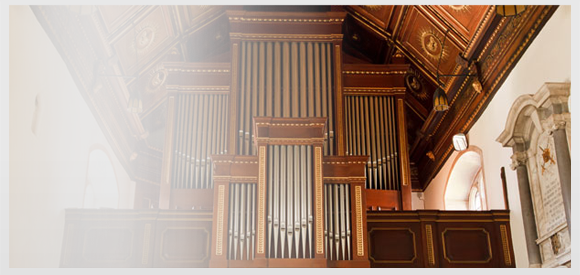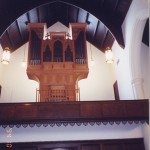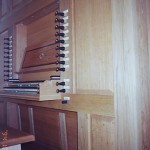Christ Church, Episcopal
As quoted from the excellent brochure on the organ:
Christ Church Parish came into being with the new century – November 1900 –
when about 100 members of St. Paul’s Episcopal asked permission to start a
parish on the east side of town. The Rev. William Robertson of Nashville
accepted the call to be the first rector, and worship began in the
Chattanooga Masonic Temple at 7th and Cherry Streets.
In 1901, the Shepherd lot corner of McCallie Avenue and Douglas Street was
purchased for $6,500 and soon plans were underway for a building to seat 500
people and to cost nearly $25,000.
The Sunday “Chattanooga Times” of October 8, 1906, carried the following
story: “This afternoon at four o’clock, the Right Rev’d Thomas Frank
Gailor, Bishop of Tennessee, will lay the cornerstone of the new Christ
Church. The procession, composed of bishops, clergy, choir and vestries of
St. Paul’s and Christ Church, will proceeed to the platform singing the hymn
“The Church’s One Foundation is Jesus Christ Her Lord.”
Assuring construction of a high moral order, the record reads that “daily
prayers have been said by the rector and many members of the congregation
that those working on the church might be spared hurt by accident and
constrained from the use of profanity.”
Almost two years later, the “Chattanooga Times” of Sunday, April 12, 1908,
reported: “The members of Christ Church Parish will celebrate today, the
Sunday next before Easter, known as Palm Sunday, in the handsome new church,
which has been in the course of erection for the past four years.”
Two decades would pass, however, before the completion of the interior as we
know it today. The man responsible for that was one of the nation’s finest
gothic revival architects – Ralph Adams Cram. New York’s Cathedral of St.
John the Divine and Washington’s National Cathedral owe their present
appearance to this illustrious man.
Rev. Robertson met Cram in Cambridge, Massachusetts, in 1927 and enlisted
his interest and help. According to Robertson, because Cram was a devout
Anglo-Catholic and married to a southern wife, he generously offered to
redesign – without cost – Christ Church’s interior. His plans added the
spacious sanctuary, high altar and magnificent rose window, the rows of tall
columns and gothic arches, the two side altars dedicated to St. Mary and St.
Joseph and the organ-choir gallery. These alterations, begun in March 1930,
were completed nine months later, just in time for All Saints’ Day, November
1st of that year.
It is primarily to Cram that Christ Church owes its beautifully designed
interior and remarkable acoustics. At the time, it was considered on the of
the finest small gothic churches in the South.
Richards, Fowkes & Co., Opus 6, 2/24, 1998






